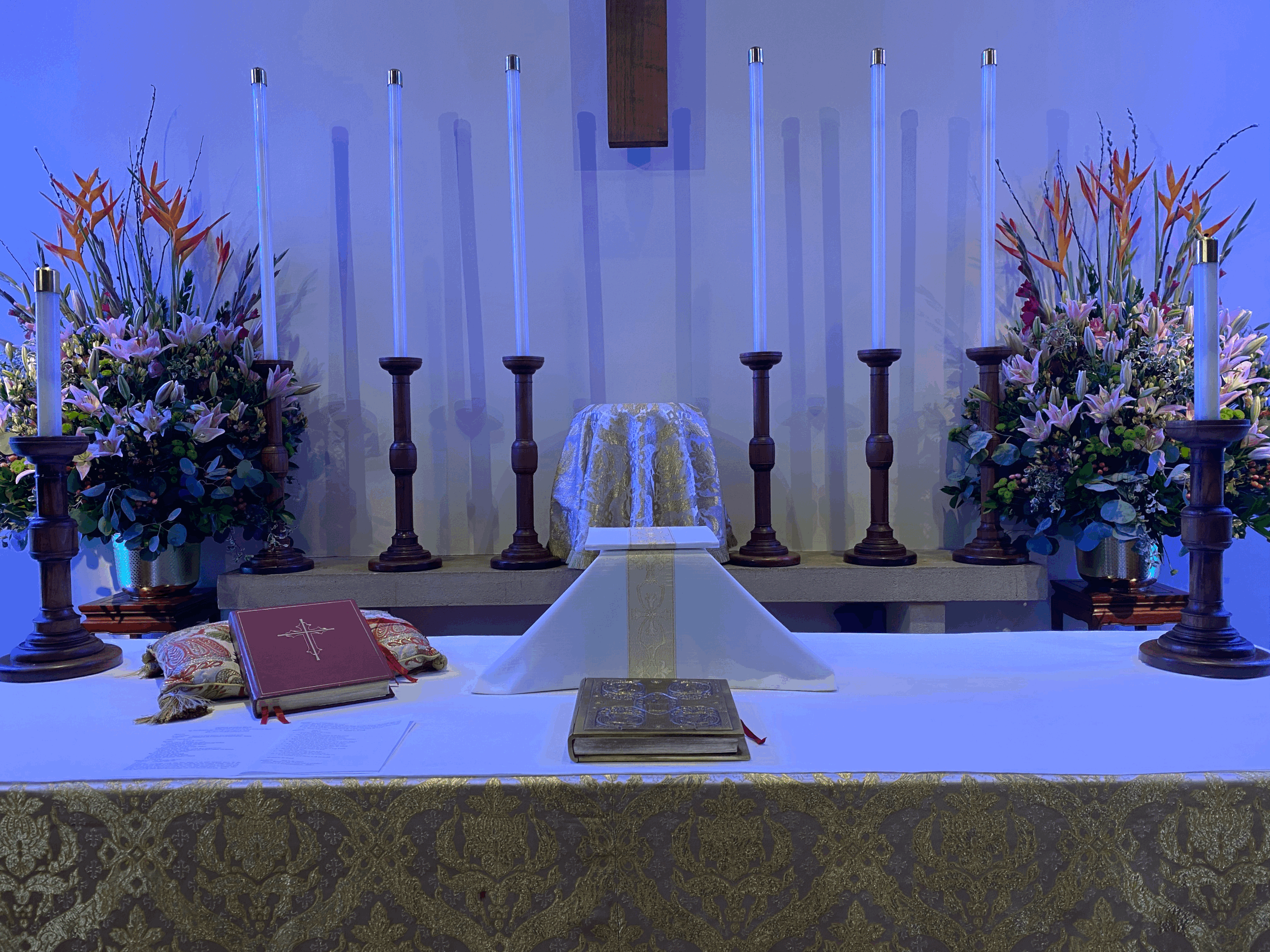From the Rector: Vigil, Low, Sung, or Solemn?
/29 April 2021
Recently one of our parishioners asked me to explain the difference between the various weekend masses at St. Mark’s. He was able to intuit most of the variations between the masses, but he still had some questions. I realized that many of us may not understand the difference between a low mass, sung mass, or a solemn mass. What follows is a quick explanation of our Sunday services.
Vigil Masses happen on the eve of a feast or a Sunday. The most important service of the entire Christian year is a vigil mass - the Great Vigil of Easter. Some of the most popular services in regard to attendance are also vigils such as Christmas Eve. Technically a vigil mass begins after sundown, being the first mass of a feast. This tradition hails from the beginnings of Christianity, when the faithful would observe the night and early morning with prayer, song, and scripture, culminating in the breaking of bread at daybreak. Sometimes vigil masses have their own set of scripture readings that are different from the scripture readings of the day. This is the case with Easter, Christmas, and historically some other feasts such as the Day of Pentecost and the Nativity of Saint John the Baptist. In regard to Sundays, typically the vigil mass uses the same readings as the Sunday masses, acting as a duplicate Sunday mass on Saturday night. Even more interesting, vigil masses may also be low, sung, or solemn masses.
Low masses are simple, said masses. Many people think that celebrating the mass in the early morning makes the mass a low mass, but this isn’t the case. Low masses may be at any time of day, as is the case with sung or solemn masses. Truthfully speaking, many churches have what is technically a low mass with hymns for their main Sunday service. Everything is spoken, but there are a few hymns sprinkled throughout the mass. As well, most weekday masses are low masses, and in many Anglo-Catholic churches, the low mass is a brief mass, lasting 25 to 30 minutes, even on Sunday mornings. Often the sermon or homily is optional at Sunday early morning low masses, and if you want to hear the sermon, you will need to attend a later morning mass. Conversely, if you do not care for sermons, the low mass might be a good option for you. As a child I remember how our neighbor was a low mass Episcopalian. He expected the priest to simply say the mass, forego the sermon, deliver the Sacrament, and spare the people the announcements.
Sung masses, using the same texts as the low mass, have music beyond hymns. The people typically sing mass parts such as the Kyrie, Gloria, psalm, alleluia, and portions of the Eucharistic Prayer. Sung masses may also have incense. Now you might be thinking that this description sounds similar to the solemn mass, and this is a reasonable assumption - keep reading. At a sung mass there is a Celebrant who may be assisted by a deacon, but not always.
What distinguishes a Solemn Mass (often called a High Mass) from a Sung Mass is the presence of a Celebrant, Deacon, and Subdeacon. Otherwise the sung mass and the solemn mass have much resemblance. Technically, due to the pandemic, our current solemn mass is more of a sung mass with “embellishments.” Our practice at the solemn mass before the pandemic was truer to the solemn mass tradition. Due to physical distancing, we have had to reduce the personnel at the altar. Also, solemn does not equal sad. Quite the contrary, solemn is the grandest the church can be in her worship of God almighty. Solemn signifies incense; solemn signifies three sacred ministers - celebrant, deacon, and subdeacon; solemn signifies dignity, grandeur, intention, reverence, and mystery. Of all these masses, the Solemn Mass is where a church such as St. Mark’s should place the majority of her energy. If we could manage only one mass on a Sunday, it would be the solemn mass. It is also worth noting that the great vigil masses of the church, such as the masses of Christmas Eve or the Great Vigil of Easter, are usually solemn masses.
There are numerous historic manuals that detail these variations in the Anglo-Catholic tradition. (For those who are interested, email me privately for suggestions.) Please note that none of the above comes from the Book of Common Prayer. The beauty of the prayer book is that Anglo-Catholics are able to “gussy-it-up,” while Evangelicals are able to “dress-it-down,” with both groups using the same texts, the same book, and the same rites. The prayer book is masterfully silent in this regard, accommodating the rich diversity of Anglicanism.
Now you might be tempted to complain that this is insider church talk. That is one way of looking at it. The other way of seeing it is that our worship demands the greatest intention and attention. All of us should be spending more time thinking about Sunday and the worship of God instead of the mundane facts of life - i.e. what are we having for breakfast, or where we will go on vacation? Our worship of Jesus Christ is the first thing that matters each day. Even family assumes a second place position to the worship of God. (Sorry, but “family first” is the great local heresy, and it certainly isn’t Christianity.) If we fail to put worship first, and if we fail to honor God with intention before everything else, then our life falls out of balance. Always worship the Lord in the beauty of holiness first. If you do this, everything else discovers its perspective.
Father Paul Lillie +








